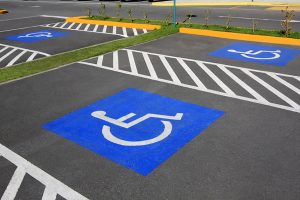
Recently, I had the privilege and honor to interview an intelligent woman who has been wheelchair bound since childhood. Never knowing how to walk, Ms. Sarla Morris was struck with polio at the young age of 11 months. Polio is an infectious disease that can spread from person to person, and it cannot be cured. This disease in many cases causes paralysis, putting people in wheelchairs. Approximately 1-2% of people with polio can develop non-paralytic or paralytic polio. Paralytic polio can affect 1 or more muscle groups, which leads to loss of muscle function or respiratory failure.
I had many intriguing questions awaiting her, and I shared a couple of them with her and got wonderful responses. Ms. Morris is a truly inspiring woman who had to learn to overcome polio and treat it as if it was just another aspect of her daily life, and this is her story.
Going to high school in the United States, she used to face a lot of hardships throughout her school years. One of the largest challenges during school she faced was having to adjust to the judgement of people seeing her body and her wheelchair, and being judged for that without them ever knowing what she was like. She felt as if the students would just overlook the fact that this was not in her hands, and that “they don’t see you as a person”. She also feels that it’s much nicer to be respectfully asked about your situation, rather than being avoided and building up a barrier. It was not until her last year of high school that she felt included amongst other students.
As an individual in a wheelchair, she is very against the accessibility of many places. While on a dinner trip with her friends, she was unable to get to the restaurant due to it only having steep stairs and no ramp. She was also face to face with rude and disrespectful staff members who weren’t willing to accommodate her and found it “ridiculous in this day and age, that you don’t have a ramp here”. This is a real example of how we can help make a difference by rating the accessibility of buildings on the VOSAP Mobile App, so people who are specially abled have the freedom to get around easier.
One of the other hardships she faces throughout her life is dealing with the lack of handicapped parking spots. On many occasions, Ms. Morris would see that there may not be enough space for her to get in and out of her parking spot. She often finds herself getting stuck in her van, because “people squeeze in compact cars” between the curb and the van, obstructing her ramp and her ability to get in and out of the van, and it becomes a very “frustrating” experience. Another thing she pointed out was that being handicapped does not mean just individuals using wheelchairs, but it also includes expecting women, people who need to use a cane, and many other examples.
Before retiring, Ms. Morris faced no discrimination at her workplace. She was a senior accountant, for 20 plus years at the same place, and had several accommodations set for her, including having a left-hand keyboard and a lower filing cabinet to be within reach. As a child, her father had suggested many times for her to go into computers or accounting. She had wanted to be an architect but that would require going to field visits, and being in a wheelchair, an obstacle was created. Hopefully in today’s high-tech world, anyone can choose a career that is not dictated by a physical adversary, including the desire to pursue architecture.
Ms. Morris enjoys driving. She feels when driving on the road, there is no difference between herself and the other drivers and she is free from judgement. Because her right arm and both legs are affected most by polio, she is able to use modern technology and a joystick-like feature to help her drive, claiming that “technology has helped us a lot”. Her car is also customized to have a ramp and a special seat that allows her to have the convenience and comfort of getting in and out of her car. She still says that parking spaces are the biggest issue when driving and trying to find spots, due to the vast number of handicapped people using those spaces, when there aren’t enough for everybody.
Talking to Ms. Sarla Morris really opened my eyes to what the specially abled community is like and what their lifestyles are like. There is no reason for there to be such a stigma towards them as individuals and as a group of people, because on the inside, we are all the same. She is a truly kind person who just wants to be seen as another human being, instead of an outsider. Ms. Morris is one of the many examples of people who don’t allow disabilities to change their attitude and life. She is one of the many people that uses a wheelchair who simply wish that others would look beyond the chair.
Written by: Juhi Pancholy
https://www.cdc.gov/ncbddd/disabilityandhealth/infographic-disability-impacts-all.html
Photo from: Jacksonville Journal-Courier
































